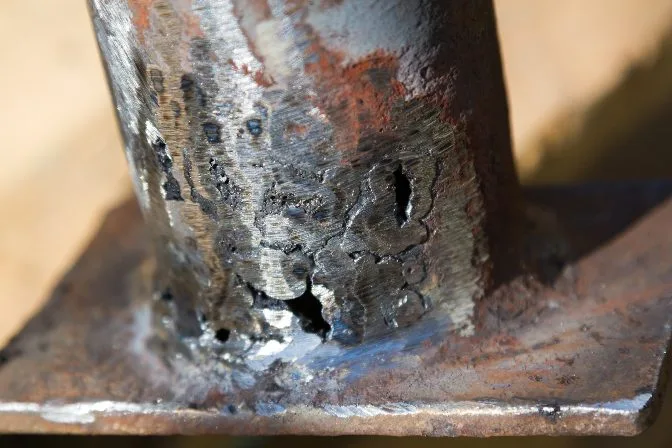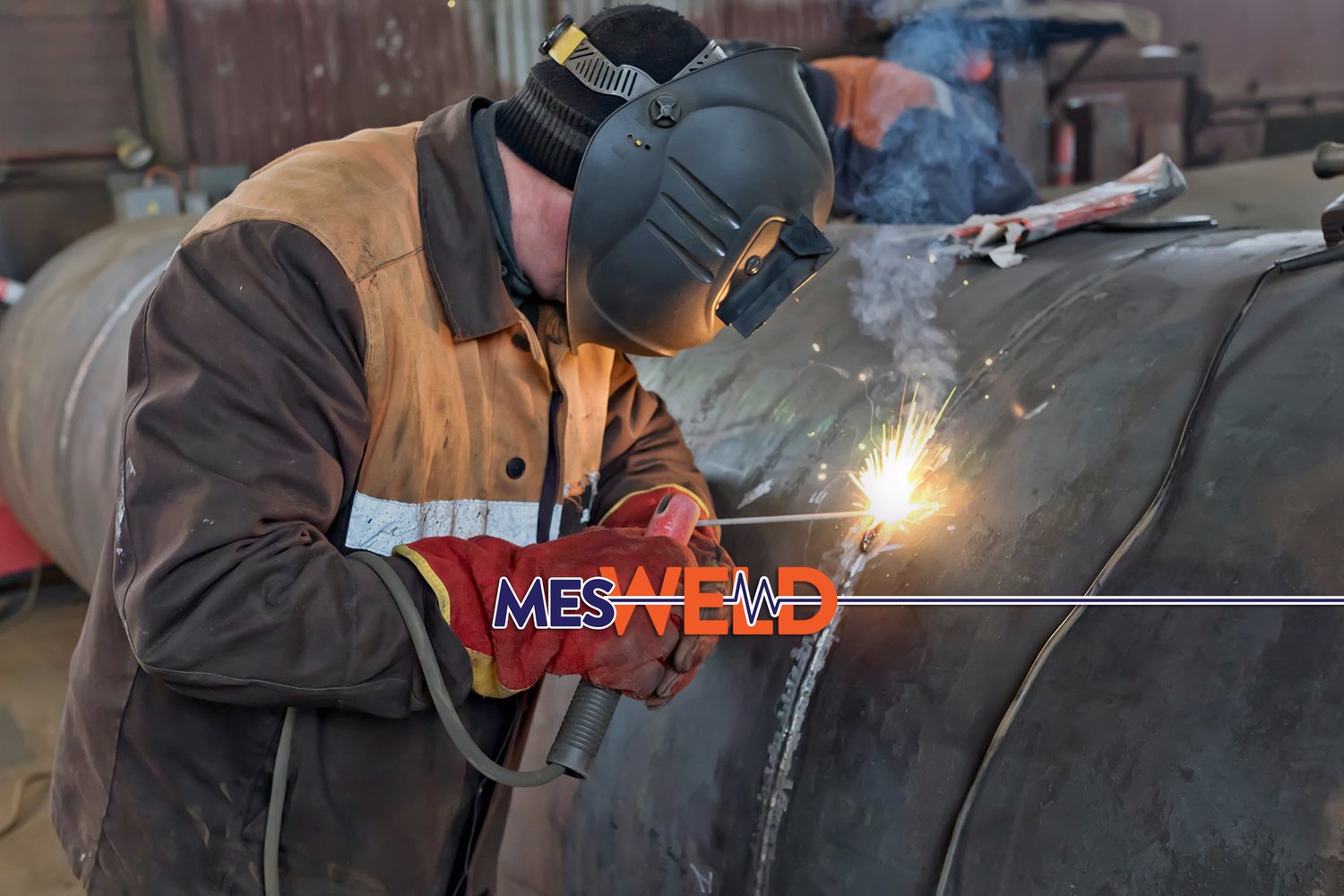Raise Your Standards with Specialist Welding Inspection Milwaukee Solutions
Raise Your Standards with Specialist Welding Inspection Milwaukee Solutions
Blog Article
A Detailed List for Effective Welding Examination Practices
In the realm of welding, the integrity of frameworks is critical, necessitating an extensive approach to examination techniques. A detailed list works as an essential device in making sure adherence to industry requirements, including vital pre-welding, in-process, and post-welding examinations. By methodically addressing product verification, weld high quality, and complete paperwork, companies can considerably improve safety and efficiency. What specific aspects should be focused on in each phase to attain ideal outcomes? Discovering these vital parts can yield understandings that exceptionally impact welding procedures.
Comprehending Welding Requirements
Welding standards play an important duty in making certain the top quality and safety and security of bonded elements and structures. These requirements establish the requirements for materials, treatments, screening, and examination, therefore giving a structure for constant quality assurance in welding processes. Different organizations, consisting of the American Welding Society (AWS), the International Company for Standardization (ISO), and the American Culture of Mechanical Engineers (ASME), have created comprehensive requirements that regulate different elements of welding.
Comprehending welding criteria is crucial for specialists in the area, as adherence to these standards decreases the risk of flaws and failures in bonded joints. These requirements cover particular requirements for weld top quality, consisting of acceptable tolerances, the kind of welding methods to be used, and the qualifications needed for welders and inspectors.

Pre-Welding Examination Steps
Prior to any welding process starts, a detailed pre-welding assessment is necessary to recognize prospective concerns that might jeopardize the high quality of the weld. This initial step offers as an important foundation for making sure conformity with appropriate welding codes and criteria.
The very first step in the pre-welding evaluation is to confirm the materials being used. Next, it is essential to evaluate the fit-up of the elements to ensure correct positioning and joint configuration.
In addition, reviewing the tidiness of the surfaces is crucial; pollutants such as paint, corrosion, or oil can detrimentally impact the high quality of the weld. Following this, a complete assessment of the welding devices should be performed, guaranteeing that it is adjusted and in good working problem.
Finally, assessing the credentials of the welding personnel is essential. Welders must possess the necessary qualifications and experience to perform the particular welds needed for the task. By sticking to these pre-welding assessment steps, the chance of problems and failings in the last weld can be significantly reduced.

In-Process Inspection Techniques
In-process inspection techniques play an essential duty in making sure the integrity and top quality of welds as they are being implemented. These strategies allow assessors to determine flaws or discrepancies from specifications in real time, therefore protecting against pricey repairs and ensuring adherence to layout requirements.
One secret technique includes aesthetic evaluation, where inspectors evaluate the weld grain for uniformity, infiltration, and proper profile. This can be complemented by the use assesses to measure weld measurements, making certain conformity with established resistances. Furthermore, the implementation of non-destructive testing (NDT) techniques, such as ultrasonic screening or magnetic fragment screening, during the welding process can disclose subsurface defects that may not show up on the surface.
One browse around these guys more crucial element is keeping an eye on welding parameters, consisting of voltage, amperage, and travel speed. Consistency in these parameters is crucial for accomplishing optimum weld high quality. Recording these parameters throughout the welding procedure provides a traceable record for future reference.
Training employees in proper assessment techniques and using suitable tools boosts the effectiveness of in-process inspections. By integrating these practices, organizations can accomplish better welds, decrease rework, and eventually make sure the safety and security and reliability of bonded structures.
Post-Welding Quality Checks
Following the conclusion of welding operations, post-welding quality checks are critical to validate that the welds satisfy all defined requirements and demands. These checks are important for ensuring the honesty and resilience of the welded joints. The examination procedure normally begins with a visual exam, evaluating for surface issues such as cracks, porosity, or insufficient blend.
Subsequently, non-destructive testing (NDT) approaches, such as ultrasonic screening, radiographic screening, or magnetic particle testing, may be utilized to click to investigate identify internal flaws More Bonuses that are not visible to the naked eye. Each technique has its one-of-a-kind benefits and is picked based upon the weld's area, material type, and the nature of the application.
Additionally, verifying dimensional accuracy is an essential facet of post-welding top quality checks. This includes determining the weld's alignment, size, and profile to ensure conformity with design requirements. Evaluating the mechanical homes of the weld, consisting of tensile toughness and ductility, can give additional guarantee of performance under operational conditions. Overall, detailed post-welding evaluations are important for keeping safety and security, adherence, and efficiency to regulative and market criteria.
Documentation and Coverage
Just how can reliable paperwork and reporting improve the welding evaluation process? Exact documents and thorough coverage are important elements that guarantee the integrity and quality of welding procedures. Welding Inspection Milwaukee. They offer as a formal document of assessment findings, promoting accountability and traceability in compliance with industry requirements

A well-structured reporting system makes it possible for examiners to clearly interact any kind of non-conformances, disparities, or areas calling for enhancement. This transparency cultivates a setting of continual renovation, as stakeholders can conveniently examine previous performance and execute rehabilitative actions.
Additionally, effective documentation consists of detailed records such as welding treatment requirements (WPS), welder certifications, and examination lists. These elements provide a framework for reviewing weld quality and adherence to established standards. In the occasion of disputes or high quality problems, thorough documentation acts as a reliable reference, minimizing obscurity and protecting all parties included.
Finally, maintaining organized records assists in training and certifying personnel, guaranteeing that market finest methods are supported. Ultimately, careful documents and reporting not only enhance the welding examination procedure yet additionally add to the total safety and security and integrity of welded structures.

Final Thought
Finally, a detailed list for effective welding evaluation methods is essential for making certain quality and security in bonded frameworks. Adherence to developed welding criteria, meticulous pre-welding inspections, rigorous in-process assessments, and thorough post-welding quality checks collectively add to the stability of welded joints. Additionally, diligent documents and coverage of examination searchings for improve accountability and promote constant renovation. Applying these methods will significantly assist in compliance with industry requirements and ultimately cultivate a culture of top quality in welding procedures.
Welding standards play an important function in making certain the quality and security of welded parts and frameworks. Numerous companies, consisting of the American Welding Culture (AWS), the International Company for Standardization (ISO), and the American Society of Mechanical Designers (ASME), have actually created thorough criteria that regulate different aspects of welding.
Complying with the completion of welding operations, post-welding top quality checks are important to validate that the welds fulfill all defined requirements and criteria - Welding Inspection Milwaukee.In verdict, a detailed checklist for effective welding inspection techniques is crucial for making sure high quality and safety in bonded structures. Adherence to developed welding requirements, meticulous pre-welding assessments, extensive in-process analyses, and complete post-welding top quality checks jointly add to the honesty of welded joints
Report this page